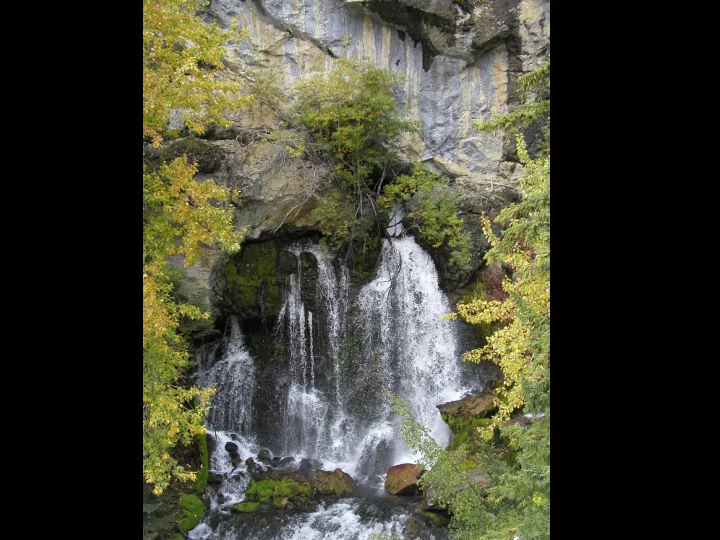

What is a Karst Topography � Karst is a three dimensional soluble rock landscape that develops by the dissolving action of water on soluble bedrock. � Include caves, epikarst exposure, sinkholes, sinking streams, springs � Can have recreational, cultural and biodiversity significance
Interaction of Karst System
Karst Routine Monitoring � Priority Evaluation Question � “Are current forest practices adequately protecting and maintaining the structure, function and ecological integrity of the surface and subsurface elements of karst systems”
Karst Sample Units and Selection � Criteria for samples units � Random, 1996-2006 � Within 100 m of block or road from 500m outside of block � KSU sample of each feature, looking for indicators for location of karst in block
Environmental factors � Removal of native forest cover � Reduction of shade � Change to native lower plant communities � Soil/ground disturbance � Post-harvest windthrow � Introduced materials � Burning � Other
Location and Distribution Karst Inventory
Karst locations
Karst Sample Unit � Cutblock and Karst Potential Unit intersection � Eligible areas for sampling include inside cutblock, 100m around cutblock and roads
Karst Sample Unit – opening information � Record information about the block and Karst Sample Unit, � Information may be obtained from a SP or Karst Assessment
Karst Field Data Card � Records indicator information such as � Windthrow,soil disturbance, introduced material, burning, retention ,
Karst Field Data Card � Summary of indicator status for individual features
Karst Summary Card � Summary of indicators for entire sample unit � Level of risk � Professional opinion
Karst Assessment Map Showing Features
Feature is a sinkhole with a cave entrance. Retention Patch and Machine free Zone
Cave entrance within the sinkhole.
Feature is a Shaft located under an old log. Trying to measure depth 5+ meters
Feature is a Shaft that was missed during Karst assessment, Logging engineers located and a machine free zone established.
Feature is an exsurgence The channel originates at a sinkhole-like feature approximately 2 m in diameter and 1 m relief.
How did this get here??
Joint field session DCR and DNI staff. Feature is a localized limestone bluff. Bluff is approximately 30m x 5 m.
The feature is a concave depression that occurs along a vertical section of the bluff. The feature is arc shaped approximately 3m x4 m
Feature is a sinkhole approximately 4 m x 2m x 1.5 m. Sinkhole is poorly managed, filled with logging slash and soil disturbance
Sinkhole approximately 4 m diameter and 2.5 m relief. Managed with a modified retention patch and a machine free zone.
An exsurgence from the soil/bedrock. Ephemeral in nature. Located outside of block.
Feature is grike, 10m long, 1 m wide and more than 1 m deep. Machine free zone and a modified retention patch.
Safety issue. Underground cavity was covered by thin layer of roots and moss.
Epikarst feature located outside of block and exposed by wind throw.
Sinkhole with a disappearing stream and a cave entrance. Retention patch surrounding feature blew over.
Sinkhole and cave entrance buried by windfall. Retention patch approximately 1.5 ha. With 90% blow down.
Sinkhole with side slope disturbance. Stream on the right
Recommend
More recommend